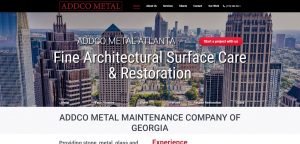Web Design in Chattahoochee Hills, Georgia - 30268 Fulton County
Welcome to DS Ragland, your go-to solution for creating captivating and functional websites in the Atlanta area! If you’re a local business looking to establish a powerful online presence, we’ve got you covered. Our team of expert designers and developers is dedicated to crafting custom websites that will leave a lasting impression on your customers. Here’s how we can help your business thrive.
Our Expert Team
At DS Ragland, we have a team of skilled web designers who are passionate about crafting visually appealing and user-friendly websites. We understand the importance of a strong online presence for businesses in today’s digital world.
Unmatched Web Design Services
Whether you need a simple, informative website or a sophisticated e-commerce platform, we’ve got you covered. Our team is well-versed in the latest web design trends and technologies, ensuring that your website not only looks stunning but also functions seamlessly across all devices.
Customer Satisfaction
Our ultimate goal is your satisfaction. We take pride in delivering high-quality websites that not only look great but also function smoothly. Your success is our success, and we are committed to providing top-notch service at every step of the process.
Get in touch with DS Ragland today, and let us help you create a powerful online presence for your business in the local area. Together, we can design a website that showcases your brand, attracts potential customers, and sets you up for long-term success.
Web Design Checklist
-
Goal Setting
1.1. Identify the purpose of the website (e.g., to inform, sell products/services, build community, etc.)
1.2. Define the target audience (demographics, interests, behavior)
1.3. Identify key competitors and analyze their websites for inspiration and differentiation
1.4. Define success metrics (e.g., website traffic, conversions, sales, etc.) -
Content Planning
2.1. Decide on the main pages and their hierarchy (e.g., Home, About Us, Services, Contact, Blog)
2.2. Plan the content for each page, keeping SEO and user experience in mind
2.3. Plan for content creation: text, images, videos, infographics, etc. (in-house or outsourced)
2.4. Plan for future updates to keep content fresh -
Design and Layout
3.1. Decide on a color scheme that aligns with your brand identity
3.2. Choose typography (fonts) that is easy to read and fits your brand
3.3. Sketch or wireframe the layout of the main pages (tools like Balsamiq, Sketch, Adobe XD can be used)
3.4. Create or source high-quality images, graphics, and other visual elements
3.5. Plan for a mobile-responsive design -
Technical Aspects
4.1. Choose a domain name and register it
4.2. Select a web hosting provider and hosting plan
4.3. Choose a Content Management System (CMS) such as WordPress, Wix, or Squarespace
4.4. Install and configure the CMS on your web host
4.5. Select or create a theme or template that suits your design plan
4.6. Install and configure any necessary plugins/extensions for added functionalities (e.g., SEO, security, forms, e-commerce) -
Development
5.1. Set up the website structure based on the planned hierarchy
5.2. Add the planned content to each page
5.3. Implement the design elements (color scheme, typography, images, etc.)
5.4. Customize the theme/template as per your wireframe/layout
5.5. Ensure that the website is mobile-friendly -
Testing and Debugging
6.1. Test website load speed and optimize if necessary
6.2. Check for broken links and fix any that are found
6.3. Test website on various browsers (Chrome, Firefox, Safari, Edge) and devices (desktop, tablet, mobile)
6.4. Conduct usability testing for user experience6.5. Test all forms and checkout process if it is an e-commerce site -
SEO and Analytics
7.1. Implement on-page SEO (meta tags, keywords in content, alt tags for images)
7.2. Set up Google Search Console and submit the sitemap
7.3. Set up Google Analytics to track website metrics
7.4. Create and implement a basic SEO strategy for off-page optimization - Launch
8.1. Remove any “under construction” pages or notices
8.2. Launch the website and announce it on social media, email newsletters, press releases, etc.
8.3. Monitor website uptime and fix any issues as they arise - Post-Launch
9.1. Regularly update content and keep the website fresh
9.2. Monitor website metrics via Google Analytics and adjust strategy as necessary
9.3. Regularly backup the website and ensure security measures are up to date
9.4. Implement feedback from users to improve the website
Remember, creating a website is an ongoing process and will require regular updates and tweaks to stay relevant and effective.
Useful links for website ideas:











